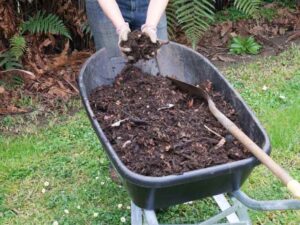When it comes to cover crops, one of my favorite plants to grow is Hairy Vetch. This plant has a few great qualities about it that make it useful on the permaculture homestead. Here’s how you can make the most out of this wonderful plant.
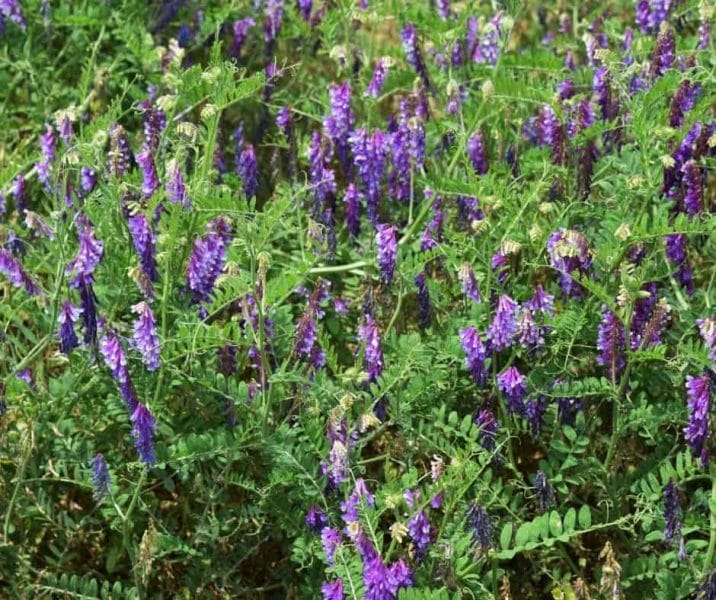
What Is Hairy Vetch?
Hairy Vetch (Vicia villosa Roth) is an annual legume, which means it’s a member of the Fabaceae or pea family. There are actually about 150 species of vetch with roughly 25 native to the United States. Hairy Vetch, however, is one of the few used for commercial use and is native to Europe and Western Asia.
| Plant Height | About 3 ft. Because The Branches Sprawl Out. |
| Stem or Vine Length | Generally 3-6 ft. Long. |
| Leaves | A Set of 12-20 Leaflets with Tendrils at the End of the Cluster. |
| Seeds | Seed Pods Mature Unevenly and Contain 4-8 Seeds. |
| Flowers | Pink To Purple, Drooping, 1/2 to 3/4 in. Long. |
Now that we know a little bit about what Hairy Vetch is, how do we use it on our homestead?
Here’s 7 Great Ways To Make Use Of Hairy Vetch.
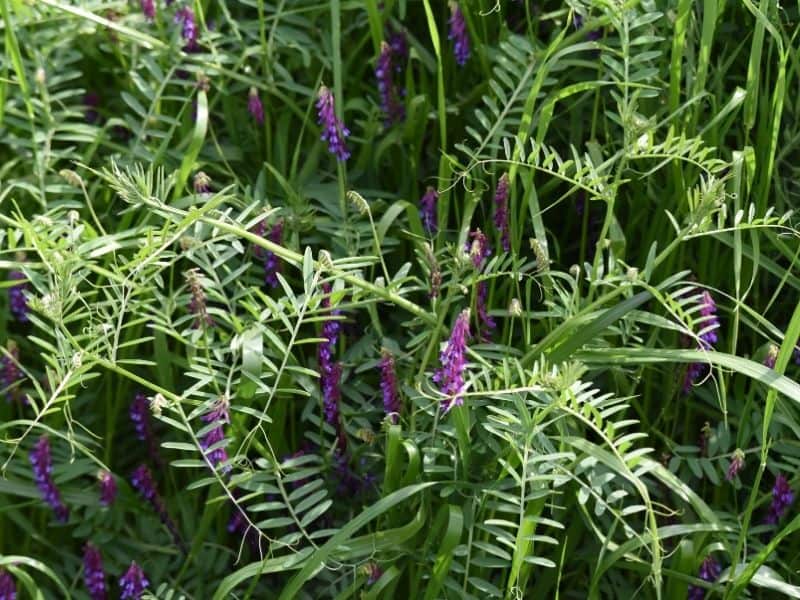
1. Nitrogen Fixer
The number one reason you would want to use Hairy Vetch as a cover crop is because of its nitrogen-fixing ability. What is it that makes this plant better at adding nitrogen (N) to the soil than some other cover crops? Let’s look a little at how the breakdown process works.
When a plant is cut and left to break down on the soil there is a nitrogen transaction that takes place. Whether it’s a negative or positive transaction depends on the carbon:nitrogen (C:N) ratio. Plants are broken down by microbes which use nitrogen to break down the carbon of the plant. If the plant has more nitrogen than it takes to break down the carbon you are left with a positive transaction of leftover nitrogen. If the plant has less nitrogen than it takes to break down the plant the microbes will source nitrogen from the soil, actually robbing the soil of its nitrogen, leaving a negative transaction.
a C:N of 25:1 is neutral, meaning that it is neither a negative or positive transaction, the plant has exactly enough nitrogen to break down the carbon in the plant. This can still have benefits to the soil but not nitrogen adding benefits. Rye for example makes a great cover crop but has a C:N of 26:1 making it nearly neutral.
This brings us to legumes of which Hairy Vetch is one. Legumes have a positive C:N ratio making them an ideal nitrogen-fixing cover crop. Hairy Vetch has a C: N Ratio of 11:1 in its vegetative state. This means after the microbes break down the plant there is a significant amount of nitrogen left to return to the soil.
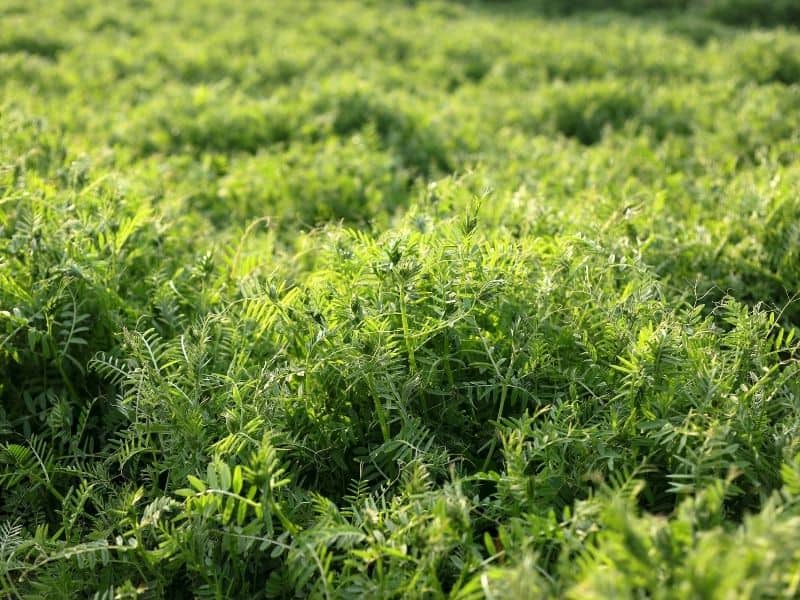
2. Livestock Feed
Hairy Vetch should not be fed to cattle or horses due to toxicity, especially in black pigmented or older animals. That being said many farmers do feed it to cattle and it makes a great food source for goats, although it is lower in protein than alfalfa and clover. It can also be used as a cut and carry feed for small livestock like chickens or rabbits.
3. Pollinator Attractor
Hairy Vetch flowers are a closed petal type flower which doesn’t appeal to all pollinators but some bees, especially large body bees and very small bees, love Hairy Vetch. Large body bees such as Bumble Bees and Carpenter Bees are able to push the petals aside to get into the nectar. Small body native bees are able to get to the pollen by crawling inside the closed petals.
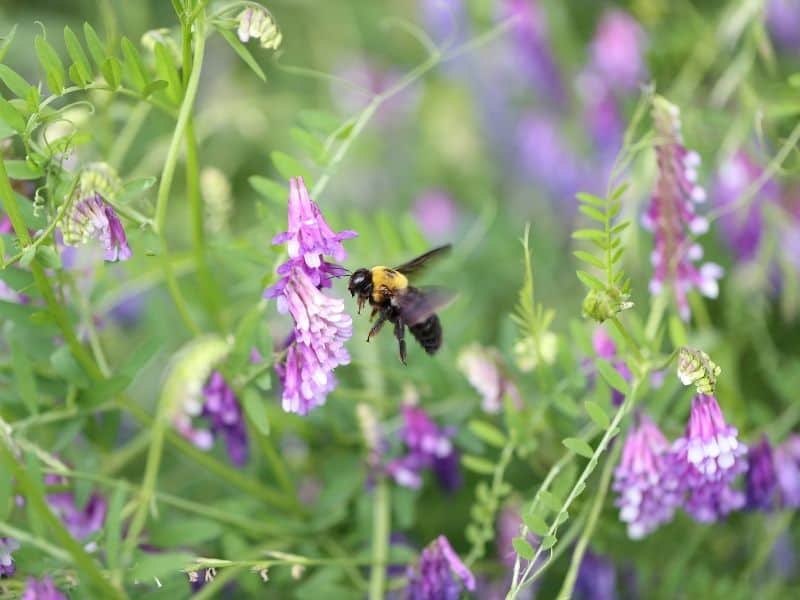
4. Weed Suppressor
Nature hates bare ground, either you plant something there or it will. Although many consider Hairy Vetch a weed, it’s a relatively easily controllable plant unlike many invasive weeds.
The simple fact is that Hairy Vetch grows thick and it suppresses all other growth beneath it, making it an ideal cover crop for this purpose. When it’s cut down before setting seed and left to decompose on the soil surface Hairy Vetch continues to be a weed suppressor just because of the amount of biomass shading the soil.
5. Erosion Preventer
Exposed soil is prone to erosion due to wind and water runoff. Hairy Vetch can prevent this in a couple of different ways, even on steep slopes.
The roots and thick vegetation hold and protect the soil from the elements providing excellent erosion control. The roots also help maintain a porous soil that absorbs the water rather than allowing the water to sheet across it and taking valuable topsoil with it.

6. Biomass
The massive amount of biomass created by Hairy Vetch provides copious amounts of mulch for the soil and compost material. The breakdown of the biomass left on the soil does a lot to condition and amend the soil through the transfer of nutrients and the deposit of organic matter to the soil.
7. Shades Soil
While Hairy Vetch is growing and when cut back and left as mulch on the soil it provides an excellent shade for the soil. This helps maintain moisture that can generate healthy soil life for the next crop to be planted.
Hairy Vetch Growing Conditions
Hairy Vetch is the most cold hardy and drought tolerant of the vetches. This makes Hairy Vetch an ideal plant for many growing conditions.
| Growing Zone | USDA Hardiness Zone 1-7 |
| Temperature | Grow Temp Preference 60-70°F, Tolerance Down To -20°F, Seed Germination Min. 60°F |
| Soil pH | Ideal 6.0-7.0. Tolerates 5.5-7.5 |
| Soil Conditions | Ideally Grown In Loose, Well Drained Soil. Grows In Poor Soil With Low Fertility and Used To Improve Soil. |
| Water Requirements | Drought Tolerant After Being Established. |
Where To Get Hairy Vetch Seed
Seeds for Hairy Vetch is readily available at many seed providers. I am a huge fan of getting my seeds from True Leaf Market because of their great customer service and high-quality seeds.
How To Plant Hairy Vetch
Seeds are broadcasted on top of soil at a rate of 1-2 pounds per 1000 square feet when planted as a cover crop. If you can lightly tamp down or water in the seeds to keep them in place it is ideal. When the conditions are right Hairy Vetch seeds should germinate in 7-14 days.
The best time to plant Hairy Vetch as a cover crop is in early fall when temperatures are still above 60°F for germination and the plants have time to grow to the ideal cut down size before going to seed.
When To Cut Down Hairy Vetch
Do not let Hairy Vetch put off seed if you are using it in a cover crop application. This is where Hairy Vetch gets a bad reputation. When it puts off seed it can become extremely invasive.
Cut down Hairy Vetch with a mower in large field cover crop application, or by hand with a gas trimmer or clearing cycle in garden applications, once the plant reaches about 50% bloom and before going to seed.
- Premium Japanese Steel Blade: The 9-inch blade is crafted from premium SK5...
- Sturdy Aluminum Handle: With a 9-inch aluminum handle, the Zenport K310 sickle...
- Ergonomic Soft Rubber Grip: Featuring a black soft rubber grip, the handle...
Last update on 2025-07-04 / Affiliate links / Images from Amazon Product Advertising API
Enjoy The Benefits
Like most things in permaculture, Hairy Vetch can be great and beneficial or a problem if managed improperly. By using this plant in the best ways it can be a game changer for improving the soil and in the productivity of your homestead.


